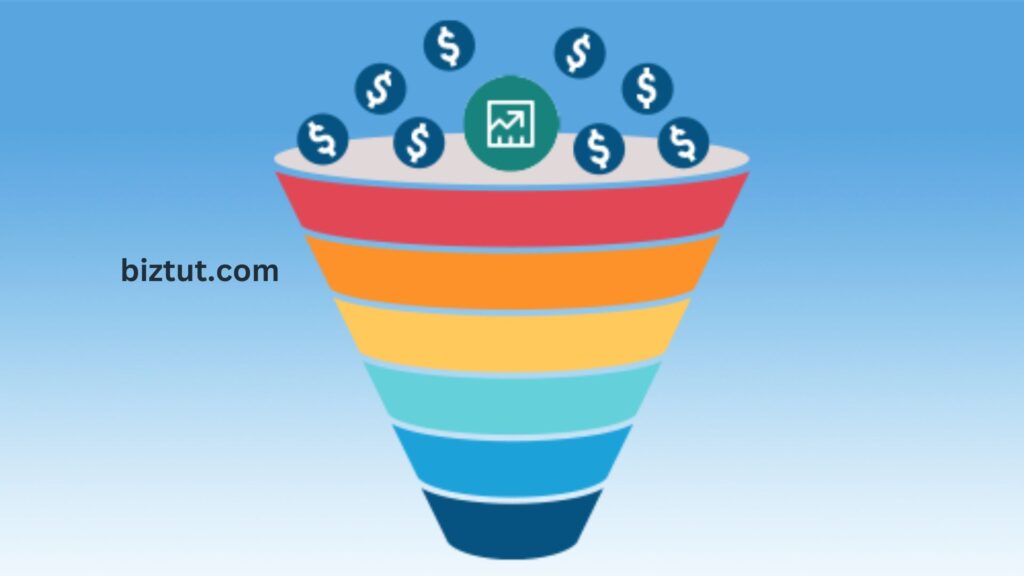Lead generation is the lifeline of any small business. In fact, 91% of marketers say it’s the most important factor for their growth. But why does it matter so much?
When you’re running a small business and looking to grow, it’s crucial to find high-quality leads. Think of lead generation like planting seeds in a garden — these leads are the seeds that, with the right care, can grow into paying customers, boosting your profits.
So, if you’re leading a small business, remember: lead generation is the fuel that keeps your business running. In this post, we’ll explore effective lead generation strategies and the best tools to make it happen.
What is Lead Generation for Small Businesses?
When it comes to small businesses, lead generation is all about identifying and drawing in potential customers.

Here’s why it’s so important:
- Steady Flow of Leads: It helps ensure you always have people interested in what you’re offering.
- Build Strong Connections: You get to know your potential customers better, understand their needs, and offer them solutions.
- Turn Prospects into Customers: Lead generation guides interested people toward making a purchase, leading to more sales.
In short, lead generation is key to helping your small business grow and thrive over time.
14 Best Ways to Generate More Leads For Your Small Business
If you want to generate leads effectively, you need to use different strategies and mix up your approach. In this section, we’ll explore a variety of ways to help you reach more people and get potential leads.

1. Use Cold Emailing
Cold emailing can be a powerful tool for small businesses to bring in high-quality leads. When done right, it can give you an incredible return on investment, up to 4400% more than other methods.
It’s all about sending emails to people who may not know about your product or service yet. Here’s why it works well for small businesses:
- Affordable: If you’re on a budget, cold emailing is a cost-effective way to reach potential customers. You can even start for free.
- Targeted: You can send emails to people who fit your ideal customer profile, increasing your chances of a positive response.
- Scalable: As your business grows, you can easily send more emails without a huge increase in costs.
- Measurable Results: Tools can track open rates, clicks, and responses so you can see how well your campaigns are working and tweak them for better results.
Just remember, to make your cold emails work, take time to understand your prospects’ needs. Write subject lines and content that catch their attention, show the value you offer, and include a clear call-to-action (CTA).
2. Create a Newsletter
Cold emails are great for reaching new people, but if you already have a list of contacts, focus on your newsletter. Whether you’re in B2B or B2C, newsletters are an awesome way to keep in touch with leads and customers.
By regularly sending valuable content, updates, or offers, you stay on their radar and build stronger relationships. Newsletters are also a cost-effective way to create a personal connection with your audience and increase your chances of converting leads into loyal customers.
3. Write Relevant Blog Posts
Blogging is like opening the door for potential customers. By sharing helpful and interesting content, you can inform, educate, and eventually convince people to become customers.
A solid content strategy should guide people from just discovering your brand to making a purchase. Start by addressing your audience’s problems, providing solutions, and leading them to the next step. Focus on answering common questions to draw more interest to your business.
4. Guest Post on Other Websites
Blogging on your own site is great, but if you’re just starting, guest posting can help you reach a wider audience. By writing for relevant websites in your industry, you tap into their audience and build credibility.
Guest posting allows you to:
- Reach a larger audience: Your content gets exposed to new readers who may be interested in what you offer.
- Build authority: Sharing your expertise on other platforms shows people you know what you’re talking about.
- Get backlinks: These are valuable for SEO and can improve your site’s search engine rankings.
- Make connections: Guest posting can help you network with other bloggers and businesses, opening doors to new opportunities.
5. Focus on SEO
Creating good content is one thing, but making sure it’s seen is another. Search engine optimization (SEO) can help with it. When customers search for terms connected to your business, SEO helps your website appear.
To start, focus on two main types of SEO:
- On-page SEO: Optimize your website’s content and structure to make it easier for search engines to understand.
- Off-page SEO: Build backlinks from other reputable websites to increase your authority.
Also, make sure you’re targeting the right keywords and phrases that your potential customers are searching for. This will boost your chances of ranking high in search results.
6. Create Targeted Landing Pages
Landing pages are single web pages designed with a specific goal in mind, like getting visitors to sign up for something or make a purchase. They’re more focused than a regular homepage, which makes them more effective at converting visitors into leads.
A good landing page is simple, clear, and provides exactly what the visitor is looking for, guiding them toward taking action.
7. Use Pay-Per-Click (PPC) Advertising
While we’ve covered organic ways to generate leads, Pay-Per-Click (PPC) advertising can be a great option if you’re willing to spend some money. With PPC, you only pay when someone clicks on your ad, making it a cost-efficient way to bring in interested leads.
You can target specific groups or locations, set your own budget, and adjust your ads based on real-time feedback, which gives you control over your results.
8. Leverage Social Media Marketing
People spend hours on social media every day, so why not meet them there? Having a strong presence on platforms like Facebook, Instagram, or LinkedIn can help you engage with potential customers.
Post regularly, share valuable content, interact with followers, and consider running targeted ads. Also, don’t forget to include links to your landing pages and use relevant hashtags to boost your visibility.
9. Collaborate with Influencers
Influencer marketing is similar to having a reliable buddy suggest your company. By working with influencers in your niche, you can reach targeted leads who trust the influencer’s recommendations.
Start by working with micro-influencers—they’re more affordable and often have highly engaged followers. Just make sure their audience aligns with your brand for the best results.
10. Use Video Marketing
Video marketing is an affordable and effective way to generate leads. People love watching short videos, and they’re more likely to engage with your brand if you share product demos, customer stories, or quick how-to videos. Plus, videos are easy to share, giving you more exposure.
In short, using videos can help you reach a wider audience and bring in more leads without breaking the bank.
11. Host Webinars
Unlike regular videos that are usually one-way, webinars allow you to actually interact with your audience. They’re like a virtual stage where you can show off your expertise, engage with people, and gather potential leads.
Webinars also give you the chance to dive deep into topics. While a promo video might just give a quick overview of your product or service, a webinar can go much further, providing detailed explanations, live demos, and answering specific questions from your audience.
Here’s how webinars can help generate high-quality leads for your small business:
- Showcasing Expertise: Webinars let you share your knowledge and position yourself as an expert. When people see you as a trusted source, they’re more likely to become leads.
- Engaging with the Audience: Webinars are interactive, so you can have real-time Q&A sessions, polls, and chats, making it easy to build relationships with your audience.
- Collecting Data: When people sign up for your webinar, you collect their contact info, which you can use for future marketing.
During the webinar, offer valuable insights, solve problems your audience faces, and show how your product or service can benefit them. Share real success stories to build trust, but always focus on providing real value rather than just pushing a sales pitch. When you give something helpful, people are more likely to stick around and become leads.
12. Offer Demos and Free Trials
If your business involves products or services that customers benefit from trying out, offering demos and free trials can be a great lead-generation tactic. It’s like letting potential customers get a feel for what you offer before they buy.
Here’s why it’s smart:
- Hands-On Experience: Letting customers try your product builds trust and confidence.
- Lower Risk: It reduces the risk for your customers since they can see if it meets their needs before making a financial commitment.
- Show, Don’t Just Tell: Sometimes it’s hard to explain the value of your product. A demo or trial lets customers see the benefits in action.
- Boosting Conversions: Giving customers a taste of what you’re selling often leads to more conversions.
It’s a win-win – potential customers get to try before they buy, and you have a better chance of turning them into long-term clients.
13. Showcase Positive Reviews
Did you know that over 90% of people check reviews before buying something online? When they’re browsing reviews, they’re usually close to making a decision. Having lots of good reviews can sway their choice.
Here’s where you should showcase positive reviews:
- Homepage: Display your best reviews right on your homepage. First impressions matter!
- Product or Service Pages: Add reviews to specific product pages, as people often look for feedback on the exact item they’re interested in.
- Testimonials Section: Create a dedicated space on your website for customer testimonials.
- Case Studies: If applicable, create case studies showing how your product or service helped solve real customer problems.
- Blog Posts: Add relevant reviews to blog posts to provide social proof and credibility.
And don’t just keep the reviews on your site. Reviews on dedicated review websites can boost your credibility even more. Encourage your customers to leave reviews everywhere, and offer incentives like discounts or loyalty points for their feedback.
14. Use Multi-Channel Marketing
We’ve talked about lots of different lead-generation strategies, but relying on just one can be risky. What suits one company might not suit another.
That’s why a multi-channel approach is so valuable. If one method isn’t working, you’ve got others to try. Think of it as having several tools in your toolbox, rather than just one. This could include social media, email marketing, content marketing, and more.
The idea is to reach potential customers in different ways and at different stages of their buying journey. This approach meets them where they are, instead of where you want them to be.
Plus, by using multiple channels, you repeat your message, which helps build brand recognition and trust. It’s a great way to expand your reach and bring in more leads.
5 Best Lead Generation Tools for Small Businesses

When it comes to generating leads, having the right tools can make a huge difference. The following are a few of the top lead generation resources for small companies:
1. Saleshandy
If cold emailing is your thing, Saleshandy is a great pick. It lets you send personalized cold emails, automate follow-ups, and track your email campaigns.
Here’s why Saleshandy can help you get more leads:
- Easy Follow-Ups: You can set up automatic follow-ups, making sure you get quicker responses from potential leads.
- Find Verified Emails: With the Saleshandy Connect extension, you can find real email addresses on LinkedIn and add them directly to your email sequence in your CRM.
- Rotate Email Addresses: The Sender Rotation feature lets you spread emails across multiple accounts, which improves your chances of landing in the recipient’s primary inbox.
- Track Your Emails: Saleshandy’s reports give you insights into open rates, replies, and clicks, helping you improve your lead generation strategy.
2. HubSpot
HubSpot is a powerful B2B marketing tool that simplifies lead management, marketing automation, and data tracking.
It comes with a CRM, personalized email marketing, a flexible content management system (CMS), and sales automation—all in one place. Plus, HubSpot’s analytics help you track your campaigns and make smart, data-driven decisions.
3. Yesware
Yesware is another great B2B tool that boosts email productivity. It helps sales teams stay organized with features like customizable email templates, tracking attachments, detailed reports, and mail merging.
You can also create multi-channel campaigns, combining emails, calls, and social media to reach more potential leads.
4. Leadfeeder
Leadfeeder helps you connect with potential customers by showing you who’s been visiting your website, what pages they’ve checked out, and how they found you. It’s also super easy to add these leads to your customer management system.
Best of all, Leadfeeder works well with tools like Google Analytics, MailChimp, Pipedrive, and Salesforce.
5. Unbounce
Unbounce is a landing page builder made for small businesses, agencies, e-commerce, and SaaS companies.
With Unbounce, you can create high-converting landing pages, pop-ups, and sticky bars to keep the leads coming. It also has an AI feature that shows you how to turn more visitors into customers. So, if you want more leads, Unbounce is a great tool to try.
Use it to create landing pages for your PPC, social media, and email marketing efforts to get the best results.
Also Read: How to Follow up with Leads?
Ready to Generate High-Quality Leads For Your Small Business?
These lead generation strategies—whether it’s cold emailing, SEO, or multichannel marketing—are powerful tools to have in your arsenal.
The secret to success is understanding your audience and offering real value. So don’t be afraid to dive in, try different approaches, and find out what works best for your small business.
Just remember, don’t rely on just one method. By mixing up your lead generation tactics, you’ll reach a wider audience and connect with different types of customers, boosting your chances of getting high-quality leads.
In the world of online lead generation, there’s no one-size-fits-all solution!
With the right strategies and a focus on your customers, you’ll be on the path to growing your leads—and your business.
Good luck!











